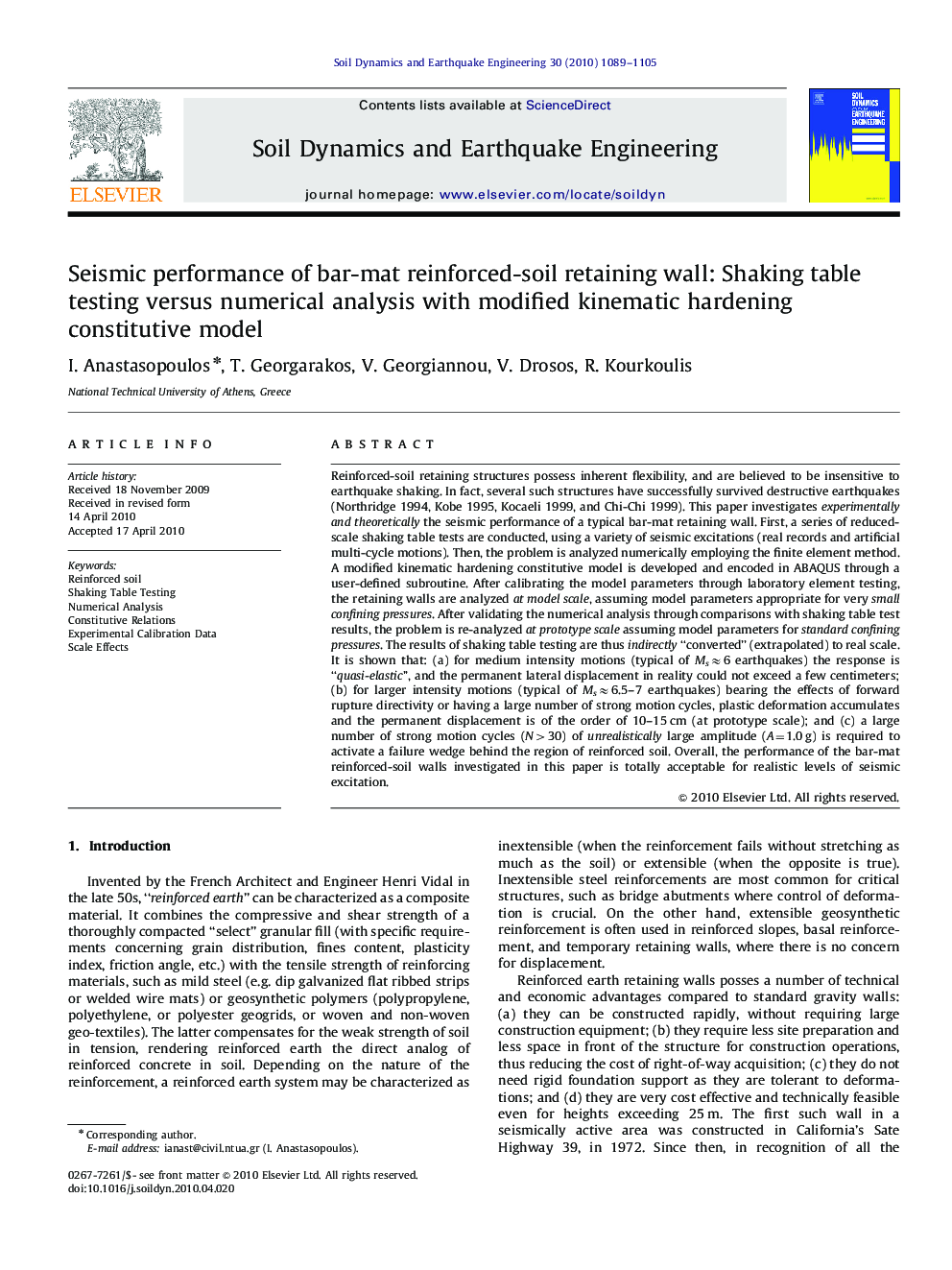| کد مقاله | کد نشریه | سال انتشار | مقاله انگلیسی | نسخه تمام متن |
|---|---|---|---|---|
| 304783 | 512827 | 2010 | 17 صفحه PDF | دانلود رایگان |

Reinforced-soil retaining structures possess inherent flexibility, and are believed to be insensitive to earthquake shaking. In fact, several such structures have successfully survived destructive earthquakes (Northridge 1994, Kobe 1995, Kocaeli 1999, and Chi-Chi 1999). This paper investigates experimentally and theoretically the seismic performance of a typical bar-mat retaining wall. First, a series of reduced-scale shaking table tests are conducted, using a variety of seismic excitations (real records and artificial multi-cycle motions). Then, the problem is analyzed numerically employing the finite element method. A modified kinematic hardening constitutive model is developed and encoded in ABAQUS through a user-defined subroutine. After calibrating the model parameters through laboratory element testing, the retaining walls are analyzed at model scale, assuming model parameters appropriate for very small confining pressures. After validating the numerical analysis through comparisons with shaking table test results, the problem is re-analyzed at prototype scale assuming model parameters for standard confining pressures. The results of shaking table testing are thus indirectly “converted” (extrapolated) to real scale. It is shown that: (a) for medium intensity motions (typical of Ms≈6 earthquakes) the response is “quasi-elastic”, and the permanent lateral displacement in reality could not exceed a few centimeters; (b) for larger intensity motions (typical of Ms≈6.5–7 earthquakes) bearing the effects of forward rupture directivity or having a large number of strong motion cycles, plastic deformation accumulates and the permanent displacement is of the order of 10–15 cm (at prototype scale); and (c) a large number of strong motion cycles (N>30) of unrealistically large amplitude (A=1.0 g) is required to activate a failure wedge behind the region of reinforced soil. Overall, the performance of the bar-mat reinforced-soil walls investigated in this paper is totally acceptable for realistic levels of seismic excitation.
Journal: Soil Dynamics and Earthquake Engineering - Volume 30, Issue 10, October 2010, Pages 1089–1105